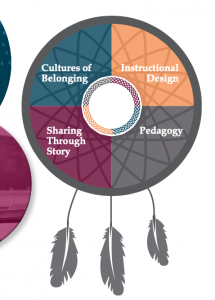CBC released an article in 2019 called, “There’s no quick fix: Advice for teachers struggling to properly integrate Indigenous content into classes.” The article takes teachers questions and hesitations and has 3 people (Carolyn Roberts, Colinda Clyne & Niigaan Sinclair) respond with advice. I felt like the article was a really nice way to wrap up my blog posts as it brought together so many of the themes I have been exploring and reading about through my research for my final project. On of the sections of my final project is Barriers to implementation (in regards to Indigenous knowledge in the classroom) and this article expresses many of the concerns that I have heard from educators around me.
Sinclair states, “I think there’s probably no one more up for the task. They need to be empowered and resourced, but I believe inn teachers. I always believe in teachers.” I think there is so much truth to this statement. If a teacher is not doing the work, it is often because they either don’t know it needs to be done or they don’t know how to do it. Very rarely is it because they are actively choosing not to. As I reflect on my own teaching practice, that is definitely the case. When I feel empowered and supported to do something, I will try anything!
A few pieces of advice from the article:
- “It’s relationships that we teach at schools, not curriculum.” *This piece of advice has been prominent throughout our course.
-
“For me, it comes back down for them to understand the history of the place where they live.” *Again, this is a piece of advice that has surfaced throughout the entire course. Knowing whose land you are on is crucial.

